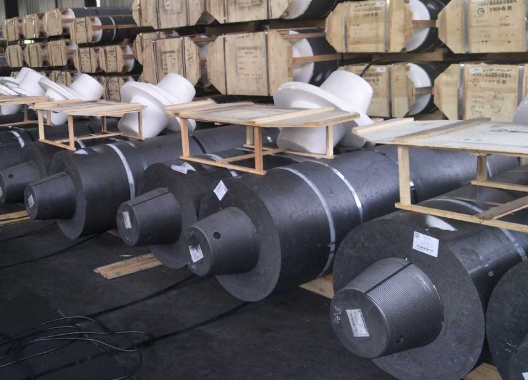
Graphite Electrode can be used for a variety of industrial purposes. The graphite electrode is used in many different industrial applications. From the smelting of metals such as copper and titanium, to producing phosphorus and carbides, or making zinc, diamonds, and other nonferrous metals. Due to its unique electrical properties, it can carry huge currents through electric arc smelters while resisting heat and other forces.
Other than its electrical properties and high resistance to heat and oxidation, graphite also boasts an extremely strong mechanical structure. This makes it an ideal choice for smelting and other metal-making processes, which are often temperature-intensive and require large currents to move materials. Graphite, being chemically inert doesn't react to molten metals and other materials. It's also got a low coefficient for thermal expansion. That means when it is heated up, the graphite will grow minimally, decreasing stress-induced cracks and fractures.
Due to their versatility, they are used for a wide range of electrochemical purposes. In electrochemical film electrochemistry (EPE), glassy carbon electrodes and highly-ordered pyrolytic Graphite are used widely. The wide potential windows of these materials make them useful in immobilizing and addressing proteins electrochemically.

HOPG is also suitable for applications involving direct electron transfer, in which the electrode's ability to accept electrons directly from a liquid solution without needing to be polarized plays a key role. In a recently published paper, a HOPG-electrode was used to address the enzyme bilirubin oxidase electrochemically. Results showed that bilirubin oxidase could be electrochemically addressed using a DET method at its T1 Cu centre.
Aside from their physical and electrical properties, graphite electrodes have an extremely small coefficient of thermal contraction, which reduces the likelihood of defects or cracks caused by stress during use. In addition, they have a high specific surface area for charge accumulation, allowing them to deliver a greater amount of energy per unit volume than other materials.
Graphite electrodes are manufactured by a complicated multi-step procedure that enhances and preserves their desired properties. The graphite-electrode creation process involves a number of stages. These include calcination and anodizing. These steps are necessary to ensure that the product meets industry quality standards and is the correct grade, specification, and size for a particular application. Ameri-Source Specialty Products makes sure that all of its graphite nipples and electrodes meet industry standards as well as the right size for each customer application. This process provides our customers with peace of mind knowing that the products they receive are of the highest quality and will be able to perform as expected in their application. This is what we call Total Quality Assurance. Ameri-Source, with its exceptional customer service and graphite electrodes and nipples in stock, is your one-stop-shop for all of these products. Please contact us for more information about our services and how they can benefit your next project.

Write a Message